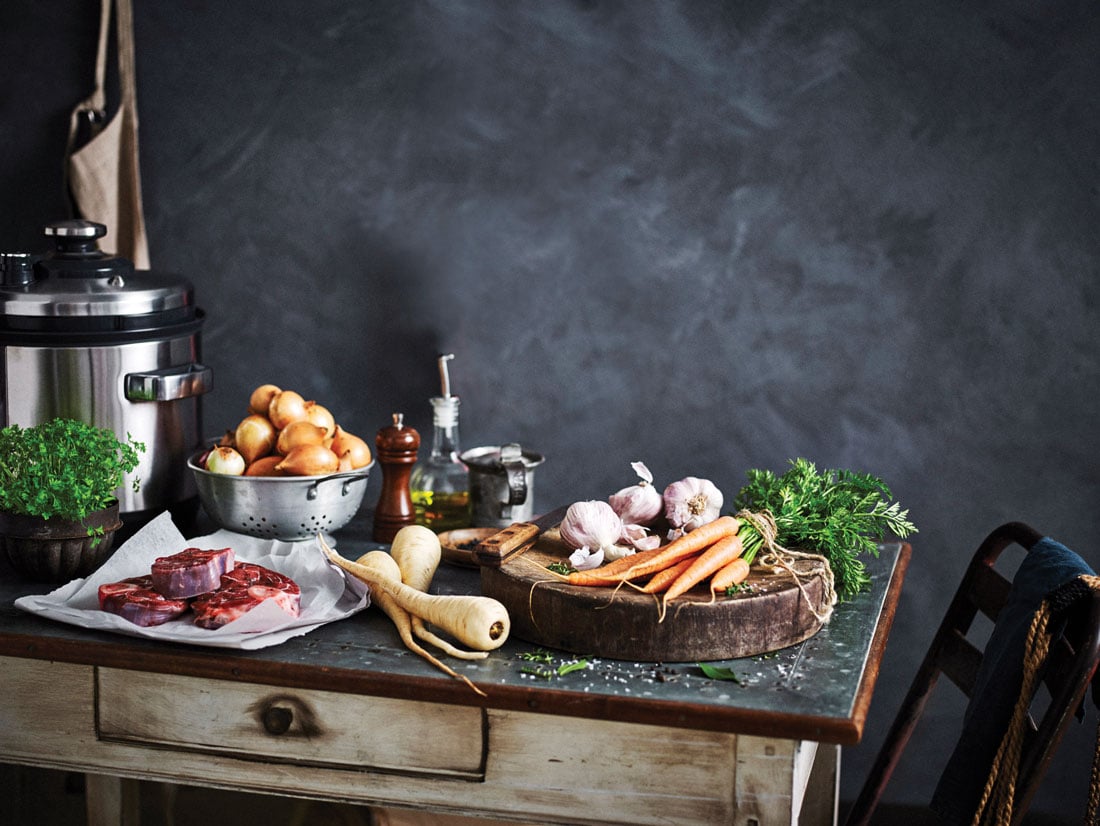It’s no wonder the slow cooker is having a moment: it meets contemporary cooks’ desire to cut energy use, thrives on cheap ingredients and delivers fuss-free comfort food after a long day at work. Here’s what you need to know to get the most out of your slow cooker
Setting savvy
Low and high settings on slow cookers don’t reference the temperature at which the food is cooked, instead it’s the time it takes for the food to reach a simmer. On a low setting it takes longer, so the food cooks for longer at a lower temperature. Once the food is simmering, the slow cooker stabilises and continues to cook at that temperature.
The low setting is ideal for tougher cuts of meat which need time to break down. Lean cuts of meat and chicken often cook better on high to avoid them drying out and overcooking. The warm setting isn’t for cooking, it just keeps the food warm until ready to serve.
Reducing sauces
One of the downsides of slow cooking is that sauces don’t reduce because the water that evaporates from the food condenses on the lid and drips back into the pot. Often that means having to place the pot back on the hob to reduce the sauce at the end, or removing and discarding excess liquid.
Try putting a tea towel over the top of the slow cooker before replacing the lid. This absorbs the excess moisture, thickening the dish and deepening its flavours. The cloth can be replaced with a fresh one when needed, but usually one tea towel during the final couple of hours will do the trick. Alternatively, you can cook the dish for an extra couple of hours with the lid off or add flour or cornflour to thicken the sauce.

Bite size
Think about the cooking time of the various ingredients you are using in your dish. For example, root veg like potatoes and carrots need longer to cook than peppers and courgettes, so if you are using them in the same dish, the latter will end up overcooked.
Deal with this by either cutting ingredients like carrots and potatoes into smaller pieces than the soft vegetables, or by cutting everything the same size and giving tougher veggies a head start.
Sauté sizzle
Meat and vegetables like onions are immeasurably better after they’ve benefitted from the Maillard reaction – the chemical reaction between amino acids and sugars that gives browned foods their sweet umami flavours. Some pots have a sauté setting, so you can sauté ingredients in the pan with the lid off before covering and turning on slow-cook mode. Others have a removable pot, which can be put on the hob to do this browning before being put back into the slow-cooker case.
Try our slow cooker beef ragu recipe here, or our slow cooker brownie recipe here.
Keen to stay up to date on what’s new and get the heads up on the best places to eat shop and stay in the South West? Want to support independent publishing and creativity in the region? You can do both at once when you take out a subscription to the printed edition of Food Magazine. Six gorgeous issues a year, delivered to your door for just £25. Subscribe here.












